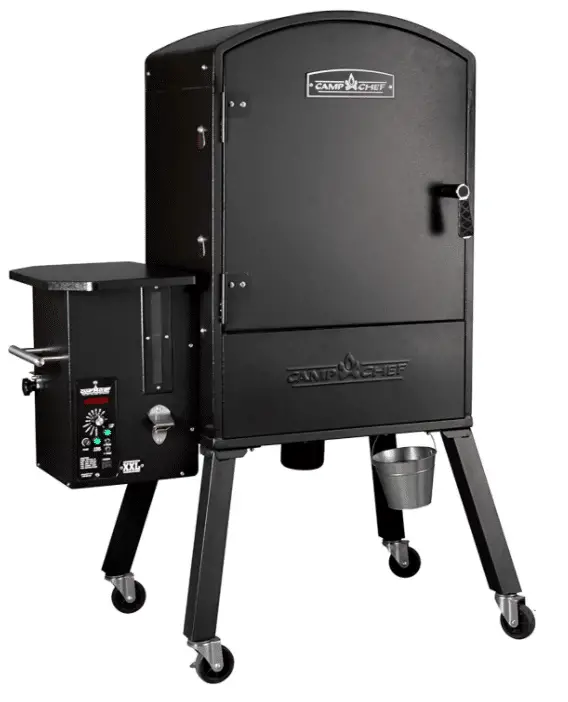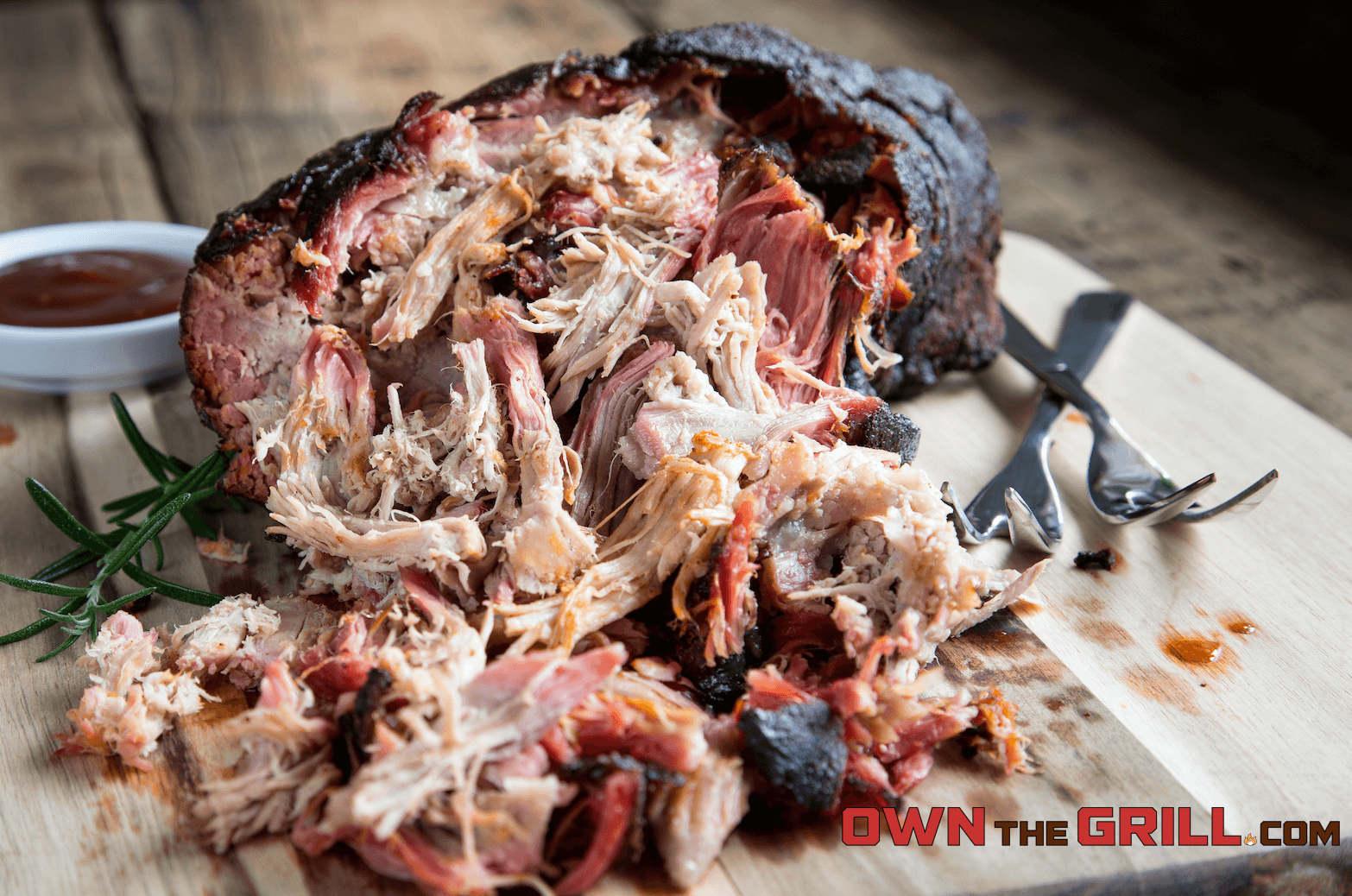The best cuts of meat for jerky are lean, flavorful, and easy to slice thin—think eye of round, top round, bottom round, flank steak, and sirloin tip. These cuts deliver the perfect balance of tenderness and chew, dry out beautifully in a dehydrator or smoker, and absorb marinades like a sponge—making them ideal for bold, protein-packed homemade jerky.
Beef jerky is one of those snacks that never goes out of style. Whether you’re hiking through the backcountry, road-tripping with the family, or just need a satisfying bite between meetings, jerky checks all the boxes: high-protein, low-carb, long-lasting, and undeniably tasty.
Sure, you can buy jerky at the store—but it’s expensive, often loaded with preservatives, and honestly, it’s hard to know what kind of meat you’re getting. Making jerky at home puts you in control. You choose the quality of meat, the cut, the marinade, and the texture. And it all starts with the right cut.
In this guide, we’ll walk you through the best cuts of beef (and a few other meats) for jerky. Whether you’re a weekend smoker warrior or new to the world of DIY dried meats, we’ve got you covered with expert picks, tips, and a few trusted sources to buy top-quality meat online if you’re ready to stock up.
Let’s break down the cuts that turn good jerky into legendary jerky.
What Makes a Great Cut of Meat for Jerky?
Not all cuts of meat are created equal when it comes to jerky. While you technically can turn just about any meat into jerky, the best cuts share one key trait: they’re very low in fat.
In grilling or smoking, fat is a welcome guest—it adds flavor, keeps things juicy, and helps tenderize tougher cuts. But when you’re making jerky, fat is the enemy. It spoils faster, goes rancid over time, and messes with the firm, chewy texture that makes jerky so satisfying.
That’s why the best cuts for jerky are lean, easy to slice thin, and consistent in texture. They dry evenly, store well, and let your marinade shine without interference from greasy pockets or uneven moisture.
In the sections below, we’ll break down the top lean cuts of beef—like eye of round, top round, and flank steak—that are affordable, easy to work with, and absolutely perfect for homemade jerky.
Best Cuts of Beef for Jerky

Beef is the most popular type of meat for jerky, by a pretty wide margin. In fact, we’ve done a deeper dive than this into the best cuts of beef for jerky that you should check out next. That resource has even more beef jerky ideas!
Top Round
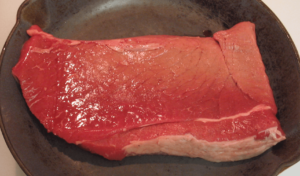
Top round steak comes from the rear leg of the cow—specifically the upper portion of the round primal—and it’s hands down one of the best cuts of beef for jerky. It checks every box: lean, flavorful, affordable, and easy to slice against the grain.
What makes top round stand out is its low fat content, which means it dehydrates evenly and keeps well without the risk of spoilage. It’s also relatively tender for a working muscle cut, making it ideal for chewy-but-not-tough jerky. If you’re planning to use a smoker or add bold marinades, top round absorbs flavor beautifully and holds up to both seasoning and smoke.
Even better, it’s one of the most budget-friendly cuts available—especially when bought in bulk—making it a go-to for anyone who wants to make large batches of jerky without breaking the bank.
Bottom Round
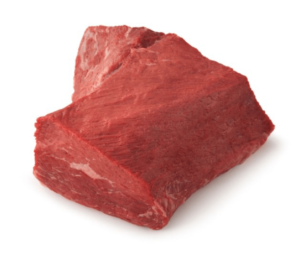
Bottom round is another solid jerky cut from the rear leg of the cow, located just beneath the top round. It shares many of the same characteristics—lean, affordable, and full of beefy flavor—but comes with a slightly firmer texture that jerky lovers either love or leave.
Compared to top round, bottom round is less tender but still an excellent choice for jerky thanks to its low fat content and uniform grain. It may have a touch more internal marbling, but not enough to cause issues during dehydration. In fact, that little bit of fat can boost flavor if you’re planning to eat your jerky within a shorter window.
For budget-conscious jerky makers, bottom round is a great pick. It’s widely available, cost-effective, and delivers a classic jerky texture that holds up well whether you’re using a dehydrator, oven, or smoker.
Sirloin Tip
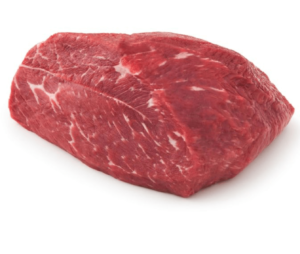
Sirloin tip—also known as the knuckle—comes from the front end of the rear leg, just adjacent to the round primal. While it’s a bit less popular than top or bottom round for jerky making, it absolutely deserves a spot on your shortlist of go-to cuts.
What makes sirloin tip steak shine is its unique combination of lean muscle and natural tenderness. It’s one of the more forgiving cuts when sliced properly, offering a tender chew that still gives you that satisfying jerky bite. Despite being slightly more expensive per pound than top or bottom round, it delivers premium-quality results that justify the price—especially if you’re aiming for a jerky that impresses on both texture and taste.
Sirloin tip is also incredibly receptive to bold marinades, spice blends, and dry rubs. Whether you’re making teriyaki-style jerky, spicy chipotle, or a smoky garlic variety, this cut soaks up flavor like a champ.
Thanks to its consistent grain structure and low fat content, sirloin tip slices well and dehydrates evenly—especially when paired with a quality dehydrator or entry-level smoker. It’s a reliable choice whether you’re drying indoors or going for that smoky, outdoor flavor profile.
And if you’re serious about elevating your jerky game, you might also want to look into buying meat in bulk, which can save money in the long run and give you more freedom to experiment with premium cuts like sirloin tip.
Bottom line? If you’re looking for a slightly more premium cut for your next batch of jerky—without going into steakhouse pricing territory—sirloin tip is a smart upgrade.
Flank Steak
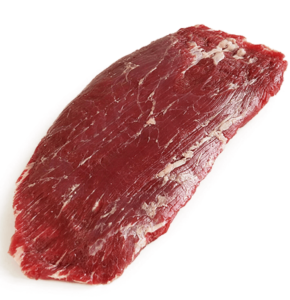
Flank steak is one of the most flavorful and versatile cuts of beef out there—and yes, it’s a personal favorite when it comes to both fajitas and homemade beef jerky. That alone should tell you something: this cut knows how to deliver big flavor across different cooking methods.
Cut from the lower chest or abdominal area of the steer, flank steak is a long, flat, hardworking muscle with a coarse grain and deeply beefy taste. It’s generally lean, though it may have a little internal marbling or a thin fat cap that should be trimmed off before making jerky.
What really sets flank steak apart is its texture—and that can either make or break your jerky depending on how you prep it. This is one of the cuts where slicing against the grain isn’t optional—it’s mandatory. Because of the long, pronounced muscle fibers, slicing with the grain will leave you with jerky that’s almost inedibly tough. But when you slice it thinly against the grain, you’ll get perfect chew every time.
Flank steak also takes to marinades exceptionally well, making it a top choice if you’re going for jerky with bold, punchy flavors—whether that’s classic teriyaki, smoky chipotle, or something spicy and sweet.
Because it’s naturally a bit more tender than some round cuts, flank steak performs beautifully in both a dehydrator and a smoker. If you want to layer in that extra depth of flavor with a low and slow smoke, flank steak is more than up for it.
It’s worth noting that flank steak tends to be more expensive per pound than top or bottom round, and availability can vary depending on your grocery store or butcher. We think Snake River Farms has some of the best flank steak you can buy online. For a limited time, if your order is over $99, you’ll also get 2 free pounds of American Wagyu ground beef for free.
Best Cuts of Game and Exotic Meats for Jerky
If you’re ready to venture beyond traditional beef jerky, wild game and exotic meats offer a whole new world of bold flavors and lean proteins. These cuts aren’t just about novelty—they’re often healthier, higher in protein, and naturally low in fat, which makes them ideal for jerky making.
Let’s break down some of the best alternative meats you can use for your next batch of jerky.
Wild Boar: Sweet, Nutty, and Surprisingly Lean
Wild boar jerky brings a unique flavor profile that’s hard to find in store-bought options. Naturally lean and high in protein, boar has a sweet, nutty taste thanks to the animal’s diet of roots, acorns, and wild herbs.
The texture is firm, with just enough chew, and the meat holds up well to sweet or smoky marinades. . Whether you’re using a dehydrator or smoking it low and slow, boar adapts beautifully.
Boar can be tricky to find, but many online wild game meat suppliers offer it in trimmed, jerky-ready portions.
Buffalo: Lean, Smoky, and Nutrient-Dense
If you’ve never tried buffalo jerky, it’s an excellent entry point into game meats. Buffalo is naturally lean, low in cholesterol, and exceptionally high in protein, making it one of the healthiest red meats out there.
It’s also very smoke-friendly and takes well to bold flavors and heavier woods like hickory or mesquite. With its mild, beef-adjacent flavor, buffalo is a great cut for experimenting with homemade jerky recipes—especially for health-conscious snackers.
Elk: Lean and Mild, With Great Texture
Elk roast is a top-tier choice for jerky. Lean and tender with minimal marbling, elk has a smooth texture and just enough bite to create satisfying, chewy jerky. It’s one of the more widely available game meats—you may even find it at upscale grocery stores or specialty butchers.
The flavor is mild, not overly gamey, making it a good choice for first-time game meat eaters. Elk takes well to a variety of seasoning profiles, whether you’re going sweet and peppery or smoky and savory.
Venison: The Classic Wild Game Jerky
Venison (deer meat) is one of the most popular wild game meats used for jerky—and for good reason. It’s naturally very lean, minimally marbled, and extremely high in protein, making it a perfect match for dehydration.
If you’re a hunter, making venison jerky is one of the best ways to preserve your harvest. Even store-bought venison tends to be mild in flavor, versatile in recipes, and easy to store once dried.
Whether you’re using an oven, smoker, or dehydrator, venison produces that classic chewy jerky texture most people love.
Yak: The Superfood of Exotic Jerky
Yes, yak meat is a real thing—and it’s one of the healthiest, leanest cuts of red meat you can use for jerky. Native to Tibet and other high-altitude regions, yak is lower in fat, higher in protein, and lower in calories than beef, pork, or even chicken.
Flavor-wise, it’s clean and slightly sweet, with almost no gaminess. Think of it like a beef-elk hybrid, with a smooth texture and rich taste that pairs beautifully with spiced marinades or smoky finishes.
If you’re after nutrient-dense jerky with exotic appeal, yak should be on your list. It’s available from specialty meat suppliers online.
Best Cuts of Pork for Jerky
Not into beef or wild game? Pork can be a tasty and affordable base for jerky—just keep an eye on fat content and make sure you trim well before dehydrating.
Pork Tenderloin: Sweet, Spicy, and Budget-Friendly
Pork tenderloin is one of the few pork cuts lean enough to work for jerky, though it does have more fat than typical beef or game options. A quick trim with a sharp knife, like our favorite Dalstrong knives, solves that issue, and you’re left with a flavorful, easy-to-work-with cut.
It shines in sweet and spicy jerky recipes, especially those featuring honey, brown sugar, cayenne, or soy-based marinades. It’s also one of the most budget-friendly cuts, which makes it great for big batches.
Bacon: Yep, It’s a Thing—and It’s Delicious
Bacon jerky might sound indulgent—and it is—but it’s also downright delicious. While bacon is high in fat (which can shorten shelf life), it delivers on flavor and texture in ways other cuts can’t. You’ll get chewy, smoky, salty-sweet bites that feel like a mashup between traditional jerky and crispy pork belly.
It works best when paired with bold, sticky glazes—think maple sriracha, brown sugar pepper, or bourbon barbecue.
If you’re making it at home, just be sure to store it in the fridge or vacuum-seal small batches to extend freshness.
How to Make Jerky at Home
Making jerky at home requires a few essential tools—and the right prep process. Here’s a quick overview:
Dehydrator: This is the gold standard for consistent results. A good dehydrator ensures even drying, low temperatures, and the perfect chewy texture.
|
Primary Rating:
4.5
|
Primary Rating:
4.4
|
Primary Rating:
4.6
|
Smoker: If you want to infuse that irresistible smoky flavor, a smoker is your best friend. Jerky made with hickory, mesquite, or applewood smoke is next-level.
|
Primary Rating:
4.0
|
Primary Rating:
4.0
|
Primary Rating:
3.9
|
Vacuum Sealer: Want to make large batches and store them for weeks or months? A food vacuum sealer is the key to freshness and shelf life.
You can also use your oven in a pinch, but temperature control and air circulation may not be as precise.
FAQs: Best Cuts of Meat for Jerky
What is the leanest meat for jerky?
Eye of round and sirloin tip are among the leanest beef cuts. Yak and venison are also extremely low in fat, making them excellent options for jerky.
Can you use fatty cuts for jerky?
Technically yes, but fat doesn’t dehydrate well and can cause your jerky to spoil faster. Always trim visible fat and choose lean cuts when possible.
What’s the best wild game meat for jerky?
Venison is the most popular and accessible, but elk, buffalo, and boar are all great choices. Yak is a fantastic, nutrient-dense option if you can find it.
Is it safe to make jerky at home?
Yes—as long as you follow proper food safety steps. Always use lean meat, marinate it thoroughly, and dehydrate at the correct temperature (typically 160°F or higher).
How long does homemade jerky last?
In sealed containers or vacuum bags, homemade jerky lasts 2–4 weeks at room temperature. Refrigeration or freezing can extend shelf life further.
Final Thoughts
Whether you stick with classic beef cuts or go off the beaten path with wild game or pork, jerky is one of the most rewarding foods you can make at home. It’s the ultimate portable snack—nutrient-dense, packed with flavor, and endlessly customizable.
This guide should help you pick the best cut of meat for jerky based on your flavor preferences, budget, and gear. From round steak to yak, there’s a jerky cut out there for everyone.
Ready to get started? Grab your favorite cut, choose a marinade, and fire up that dehydrator or smoker.
Discover more from Own The Grill
Subscribe to get the latest posts sent to your email.







